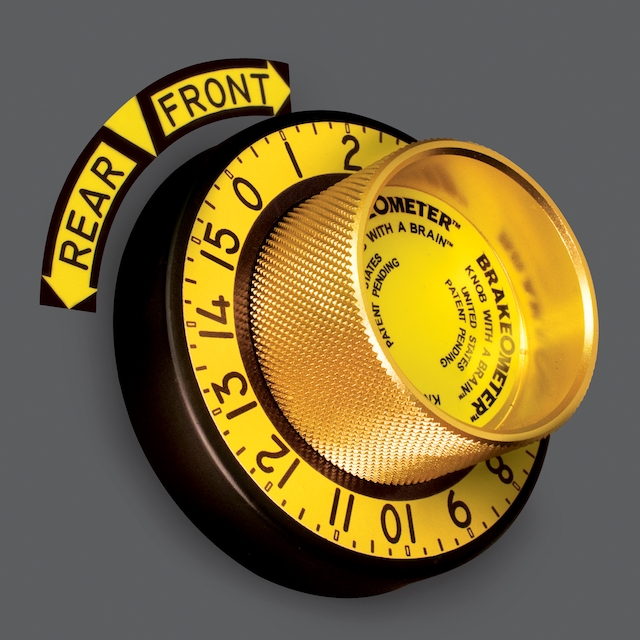The braking system is the most vital safety system in your vehicle. Engineers spend countless hours calibrating braking systems for maximum performance, efficiency, and safety. Part of their process is calibrating brake bias.
What Is Brake Bias?

Brake bias, or brake balance, is the percentage of braking force that’s applied to the front wheels. This is done in order to account for weight transfer that occurs during braking. On rear-wheel-drive cars, there is approximately 60-70% brake bias and on front-wheel-drive cars, there is about 70-80% brake bias. This means 60-70% and 70-80% of braking force is applied from the front brakes respectively.
Why Is Brake Bias Important?

Brake bias is implemented for two reasons:
- Some vehicles have a relatively high percentage of weight over the front axle, such as front wheel drive vehicles or pickup trucks.
- Weight shifts forward under braking. This is more pronounced with taller, more softly sprung vehicles.
When braking, the weight of the car shifts from the rear to the front. This reduces traction in the rear and increases traction in the front. Calibrating the brake system so the front brakes exert more force than the rear brakes helps the driver stop shorter and maintain better control during braking.
Braking performance is maximized right before brake lockup. Sliding tires have less grip than rolling tires. Therefore, when calibrating brake bias, seeing which set of wheels locks up first is a key factor. If the rear locks up first then the vehicle will oversteer. If the front locks up first then the vehicle will understeer. The optimal brake bias is for both the front and rear to lock up at the same time.
Brake bias is variable and can change due to factors like:
- Vehicle load
- Tire and brake wear
- Road conditions
Brake bias can be influenced by aftermarket components as well. Upgraded tires, brake hardware, and suspension components can shift the brake bias forward or rearward. Keep this in mind when upgrading your vehicle, especially when looking for performance gains. As most vehicles already have front brake bias, anything that improves braking performance of the front brakes shifts brake bias even further forward.
Forward Brake Bias Shift
The following items shift brake bias forward (causing the rear brakes to lock up sooner):
- Larger front rotors
- Larger front calipers
- Higher friction front brake pads
- Lower friction rear brake pads
- Raised suspension, as more weight transfers forward
- More sticky tires
Rearward Brake Bias Shift
The following things shift brake bias rearward (causing the front brakes to lock up sooner):
- Smaller front rotors
- Smaller front calipers
- Lower friction front brake pads
- Higher friction rear brake pads
- More weight on the rear axle, as when towing or hauling a load
- Lowered suspension, as less weight transfers forward
- Less sticky tires
One thing that changes brake bias in a surprising way is putting on a set of stickier tires, such as for a track day. It would seem like putting on 4 stickier tires shouldn’t change brake bias at all. But because bias is already forward due to vehicle weight transferring forward, a set of stickier tires will improve braking of the front wheels disproportionately more than the rear.
Which Is Preferred?

Most OEM cars are designed with an extra 5-15% front bias as they are front end heavy, relatively tall, and have soft enough suspensions to allow weight transfer forward. Modern cars are equipped with ABS, an anti-lock braking system, and have EBD, and electronic brake force distribution. This automatically adjusts the level of braking force sent to each axle, preventing the wheels from locking up.
Buy Brakes has 8 warehouse locations in the United States providing fast shipping. All orders over $99 receive free shipping. Have a question? Reach our 5-star concierge service at 888-257-7149 or text us at 702-903-1713.



